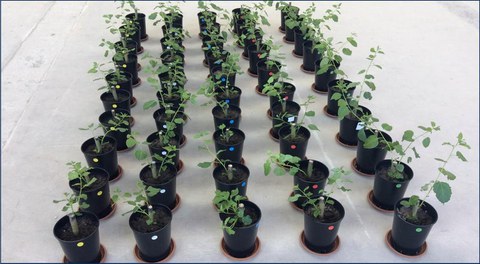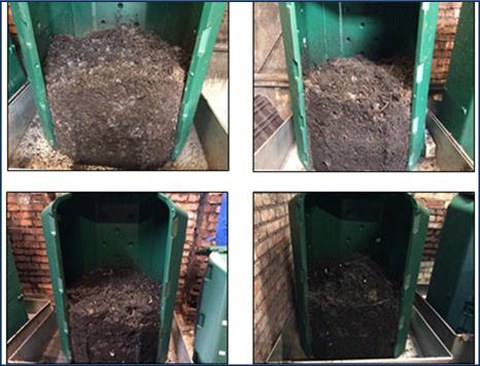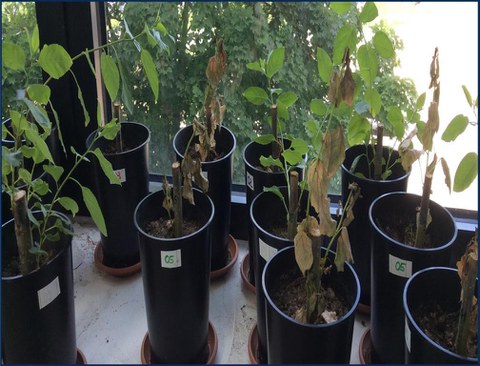Research project "Substitute building materials for the recultivation of landfills"
Development of highly flexible processing technologies for the production of novel landfill substitute building materials
| Partners: (all from GER) |
- Landwirtschaftliches Verarbeitungszentrum Markranstädt GmbH, - Veolia Klärschlammverwertung Deutschland GmbH, - Silberland Sondermaschinen- und Fördertechnik GmbH, - Institut für Holztechnologie Dresden gemeinnützige GmbH, - Fraunhofer-Institut für Keramische Technologien und Systeme (IKTS). |
| Funding: | SAB - Sächsische Aufbaubank Dresden (Saxon Development Bank) |
| Duration: | January 2017 - December 2019 |
| Contact: | Dr. Axel Fischer |

Plant experiments at IAK, 1. test series
Aim of the project:
The aim of the project is the development of novel landfill substitute building materials, which are used in the recultivation layer. They consist of sewage sludge, edible mushroom substrates and excavation material.
Sewage sludge and edible mushroom substrates are currently used as fertilizer. Due to legal regulations of the Sewage Sludge Regulation (AbfKlärV) and the Fertilizer Regulation (DüV), however, their use is now limited. The use as recultivation material could represent a feasible utilization strategy.
Interrogation
Does the use of sewage sludge as recultivation material represent a feasible exploitation strategy?
To what extent is the utilization of sewage sludge besides its incineration still possible in the course of the amendment to the Sewage Sludge Ordinance (AbfKlärV)?
Are waste products from edible mushroom production suitable as a structural material for the composting of sewage sludge?
How do mushroom substrates affect the composting properties (e.g. water holding capacity and nutrient availability)?
Composting experiments
Three different composting experiments with different compost mixtures were carried out in a two-year-period.
The mixtures consisted in various compositions of dewatered sewage sludge, structural material or sieving waste material, as well as champignon or king oyster mushroom substrate.

Composting experiments at IAK
Plant experiments
At intervals of one year, two series of plant experiments were carried out. Here, it was tested which material mixtures (each consisting of different rates and type of compost and excavation material) have the best effect on plant growth.
As a plant poplar hybrid Max 3 was used. The experiments were carried out as a pot experiment indoor.

Plant experiments at IAK, 2. test series
The project was completed at the end of the year, i.e. in December 2019.
It can be summarized that the admixture of mushroom substrates to compost does not bring any disadvantages, but also does not have a significant beneficial effect.
